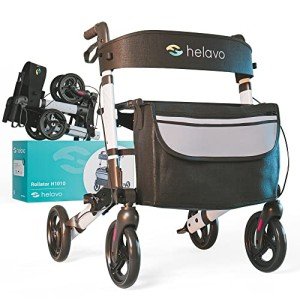Understanding Transport Walkers: A Comprehensive Guide
Transport walkers are important mobility aids created to improve the self-reliance and safety of individuals, particularly the elderly and those with mobility difficulties. Combining the functionality of a walker with the convenience of a seat, these gadgets enable users to keep their mobility while providing a resting choice whenever required. In this post, we check out the features, benefits, types, and maintenance of transport walkers, along with frequently asked concerns to gear up readers with necessary knowledge.
What is a Transport Walker?
Transport walkers are mobility devices equipped with wheels developed for individuals with mobility obstacles. Unlike standard walkers, which require users to raise them slightly to move, transport walkers include wheels that assist in rolling. They usually include a seat, handlebars for stability, and a storage basket for personal products.
Key Features of Transport Walkers
- Wheeled Base: The rolling wheels enable easy movement, minimizing the pressure on the user.
- Foldable Design: Most transport walkers can be quickly folded for storage or transport.
- Comfortable Seating: A padded seat is typically integrated, offering users a place to rest.
- Hand Brakes: Designed for safety, a lot of walkers feature hand brakes that permit users to manage their speed and maintain stability.
- Storage Options: An integrated basket or pouch at the front enables users to bring individual products without the need for additional bags.
Benefits of Using Transport Walkers
Transport walkers offer various benefits that cater to the requirements of various users:
1. Increased Mobility
Transport walkers enable people to browse their areas more easily. They are especially helpful for those recovering from surgery or dealing with chronic health problems.
2. Safety and Stability
With a durable frame and encouraging handlebars, transport walkers supply stability, decreasing the threat of falls and mishaps.
3. Resting Capability
The seating option uses users an opportunity to rest during extended outings, which is necessary for those who might tire easily.
4. Easy Maneuverability
Transport walkers are lightweight and designed for smooth movement, making them easy to utilize both indoors and outdoors.
5. Self-reliance
By utilizing transport walkers, people can take part in activities without relying heavily on caregivers, thus enhancing their independence and quality of life.
Kinds Of Transport Walkers
When thinking about a transport walker, it's important to acknowledge the various types offered:
| Type | Description |
|---|---|
| Requirement Transport Walker | Basic model with four wheels and a seat. |
| Transport Wheelchair | Combines the functions of a walker and a wheelchair. Can be pressed by a caregiver. |
| Heavy-Duty Transport Walker | Created for larger users, offering extra stability and weight capability. |
| Two-Wheel Walker | Features 2 wheels at the front and 2 back legs, enabling better balance. |
| Reclining Walker | Supplies adjustable seating for comfort, targeting users with unique requirements. |
How to Choose the Right Transport Walker
Elements to Consider:
- User's Height: Ensure that the walker is adjustable to the user's height for ideal comfort and safety.
- Weight Capacity: Check the walker's weight limit to ensure it can accommodate the user.
- Meant Use: Determine if the walker will be used primarily indoors, outdoors, or both.
- Storage Features: Evaluate the benefit of storage options offered with the walker.
- Portability: If regular transport of the walker is required, consider its weight and how easily it can be folded.
Maintenance Tips for Transport Walkers
To extend the life and effectiveness of a transport walker, follow these upkeep suggestions:
- Regular Cleaning: Wipe down the frame and seat with a wet fabric to remove dirt and discolorations.
- Check the Wheels: Ensure the wheels are rolling efficiently; lubricate if needed.
- Examine Brakes: Regularly examine that hand brakes work appropriately for included security.
- Tighten Up Bolts and Screws: Periodically check and tighten any loose elements.
- Change Parts As Needed: If wheels or footrests show signs of wear, consider changing them for optimum security.
Often Asked Questions (FAQs)
1. Who can take advantage of a transport walker?
Transport walkers are ideal for older grownups, individuals recuperating from surgical treatments, and those with conditions such as arthritis, stroke, or balance problems.
2. Are transport walkers appropriate for outdoor usage?
Yes, lots of transport walkers are designed with durable products and wheels that can deal with outdoor surface, although it's best to examine maker specs.
3. Just how much weight can a transport walker generally handle?
The majority of transport walkers have weight capabilities ranging from 250 to 400 pounds, depending upon the brand name and model.
4. Do I require a prescription to buy a transport walker?
While a prescription is not normally required to acquire a transport walker, seeking advice from a doctor can help in picking the best walker for particular requirements.
5. Can transport walkers be utilized by people with restricted upper body strength?
Yes, many designs are designed with features that provide stability and make them much easier to utilize for individuals with limited upper body strength.
Transport walkers are important help that promote independence, safety, and mobility for individuals with mobility obstacles. By understanding Secure Rollator Walker , benefits, and upkeep, users can choose the best walker to fit their lifestyle. Investing in a transport walker can make a substantial difference in enhancing one's quality of life, making daily activities more manageable. Whether used for short errands or longer trips, a transport walker supplies the support and confidence needed to navigate the world.

